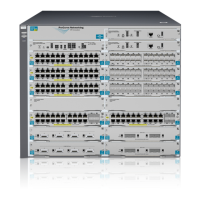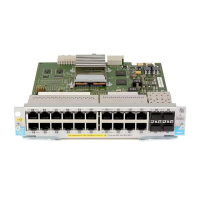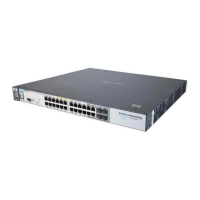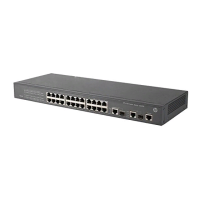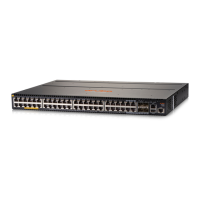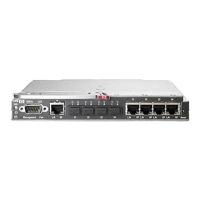128 Theory of operation ENWW
The types and purposes of the VIDEO INTERFACE signals are described below.
● VDO1, /VDO1, VDO2, /VDO2, VDO3, /VDO3, VDO4, /VDO4, (VIDEO) signals (formatter
output): These signals are the information of the image the printer engine is going to print.
The laser drivers turn the laser diode on or off based on these signals. This printer has four
laser units, one for each color. The formatter sends each color’s VIDEO signal (Y=VDO1, /
VDO1 M=VDO2, /VDO2 C=VDO3, /VDO3 Bk=VDO4, /VDO4) to the DC controller. The VIDEO
signal is a differential signal. The laser diode emits light when the VDO signal is “H”, and the /
VDO signal is “L”.
Note The abbreviations Bk and K are used interchangeably and refer to the black toner developing
operations.
● /TOP (VERTICAL SYNCHRONOUS) signal (formatter input): This signal synchronizes the
vertical (sub) scanning line of the image: the reference signal in the vertical direction of the
laser beam. This printer has four drums. When the /TOP signal is received, the formatter
counts the /BD signals of each color and sends each color’s VIDEO signals corresponding to
the specific number of scanning in sequence to the DC controller. This synchronizes the
leading edge of each color’s image on the drum with the leading edge of the paper. The figure
below illustrates the output timing of the VIDEO signals in response to the /TOP signal.
Figure 5-17 Output timing of the VIDEO signal in response to the /TOP signal
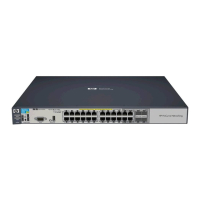
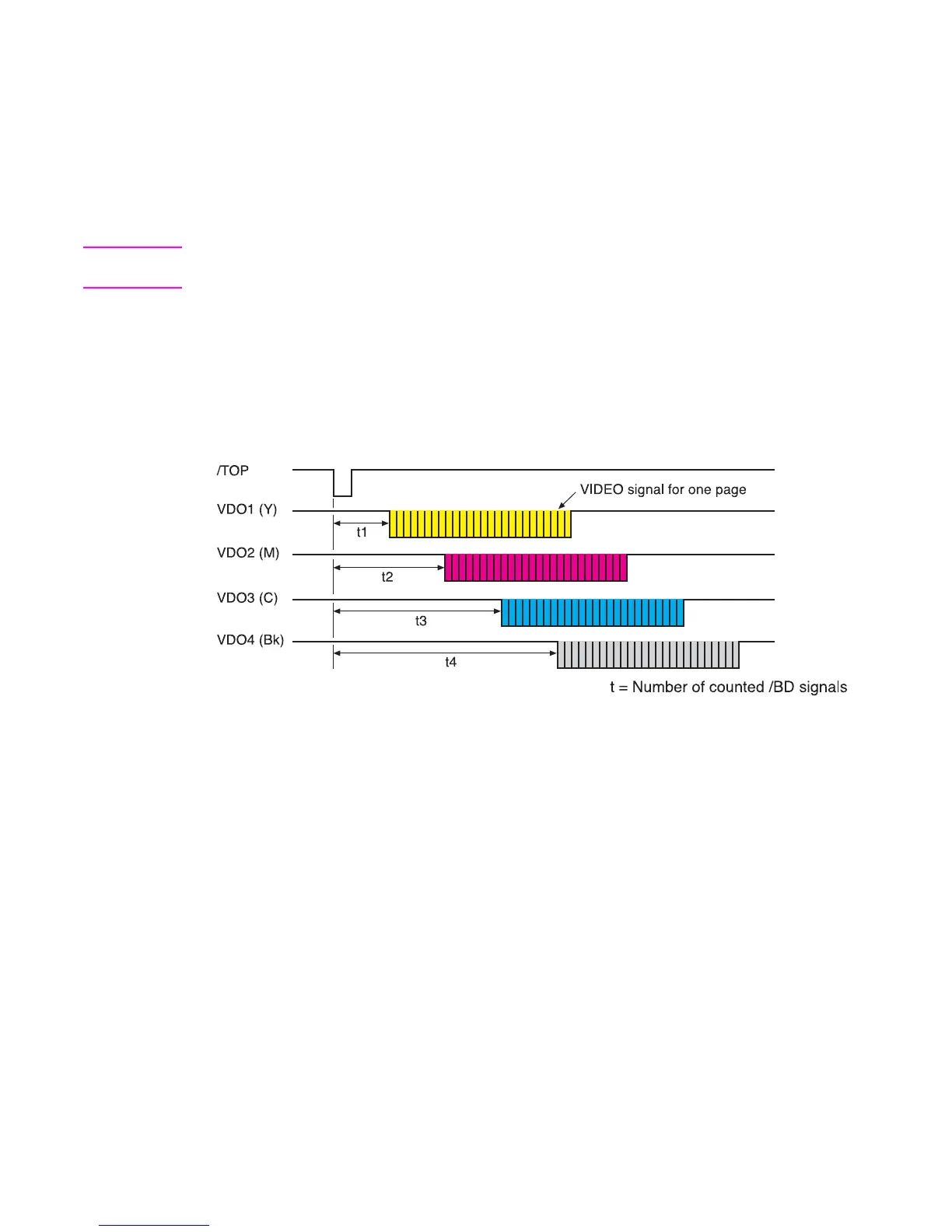